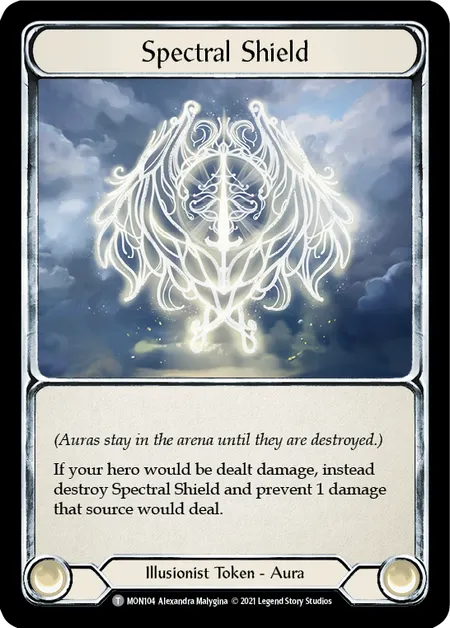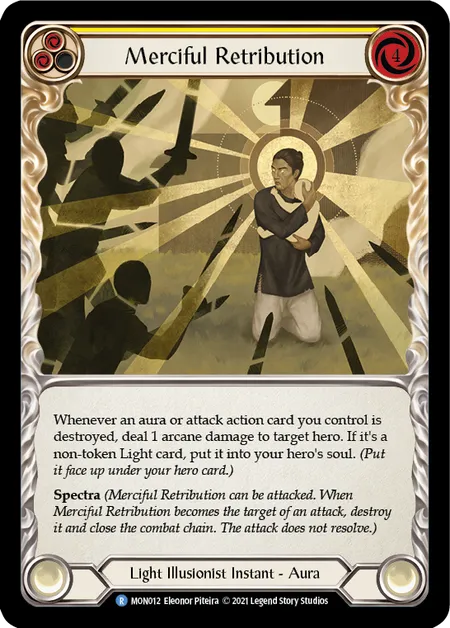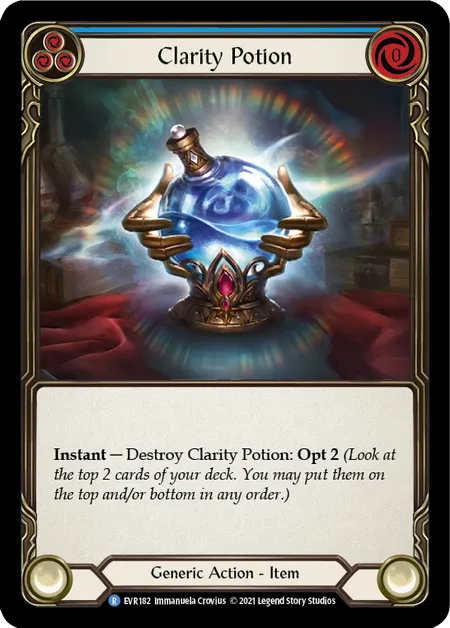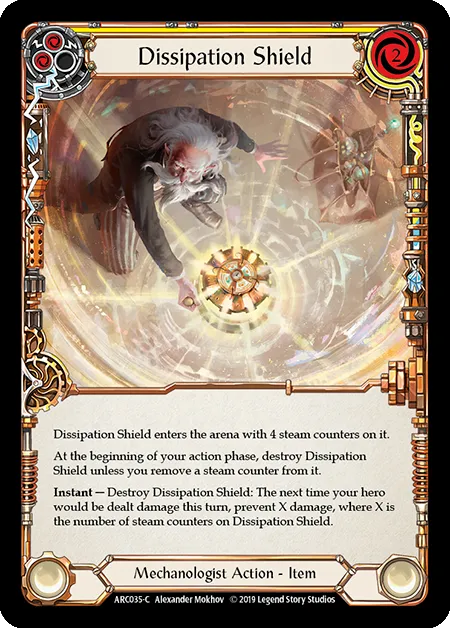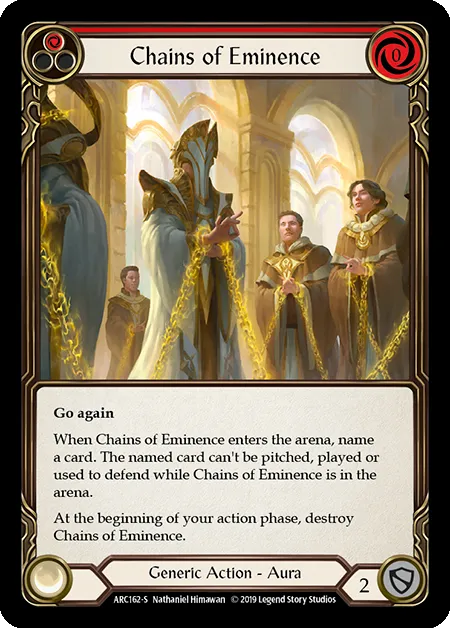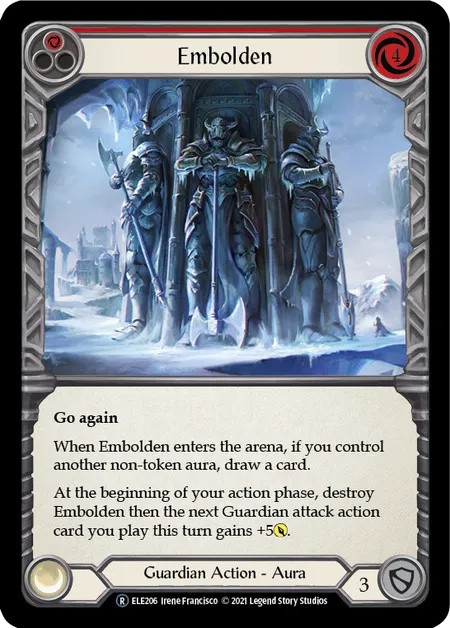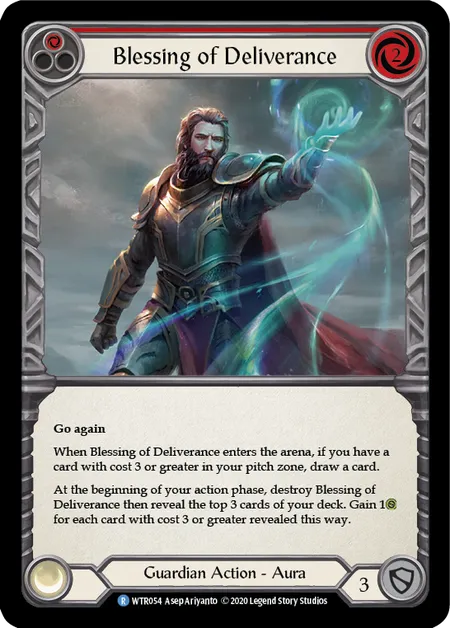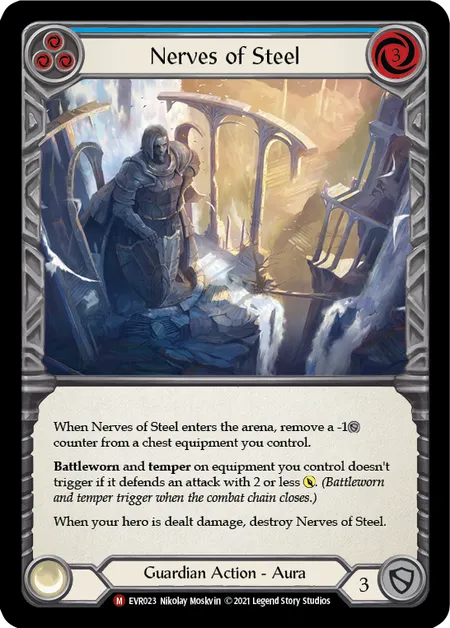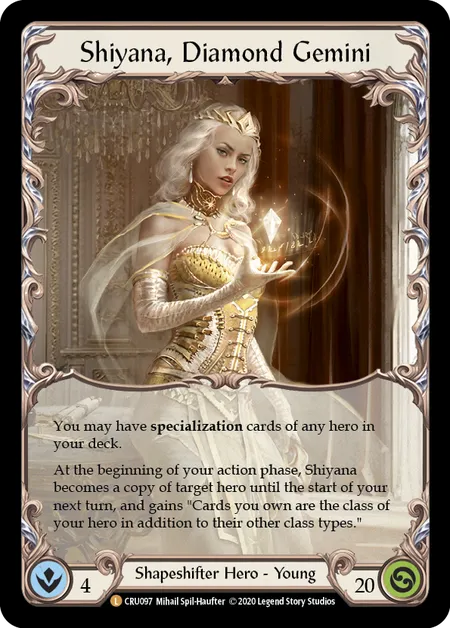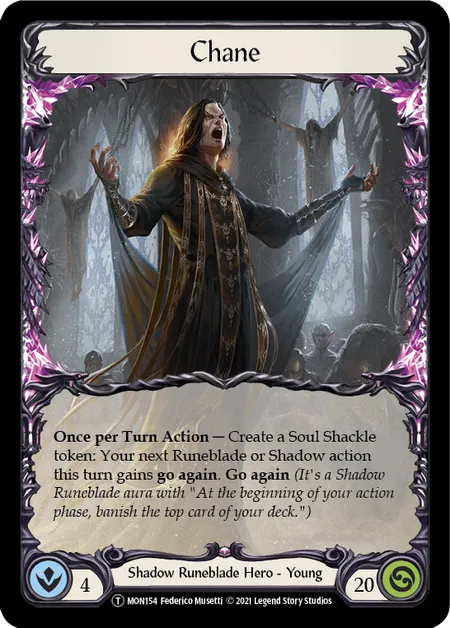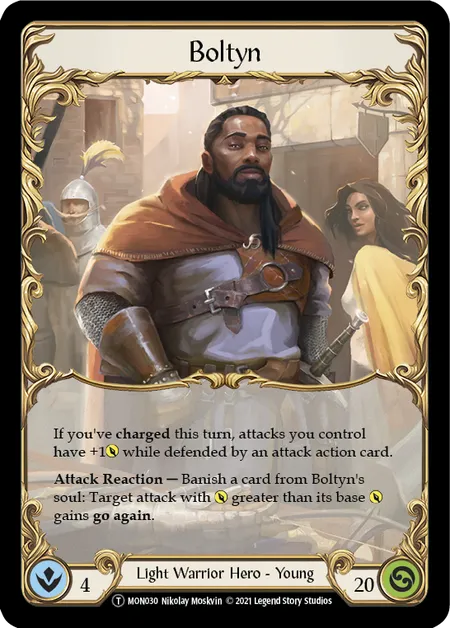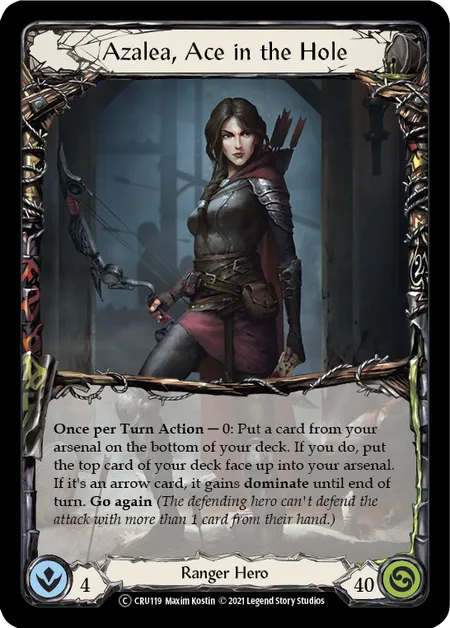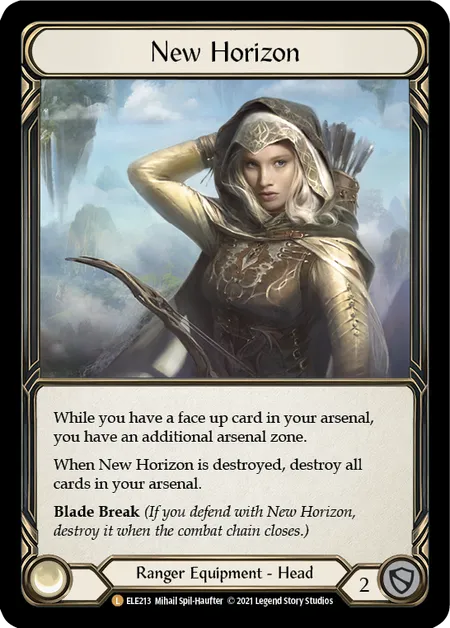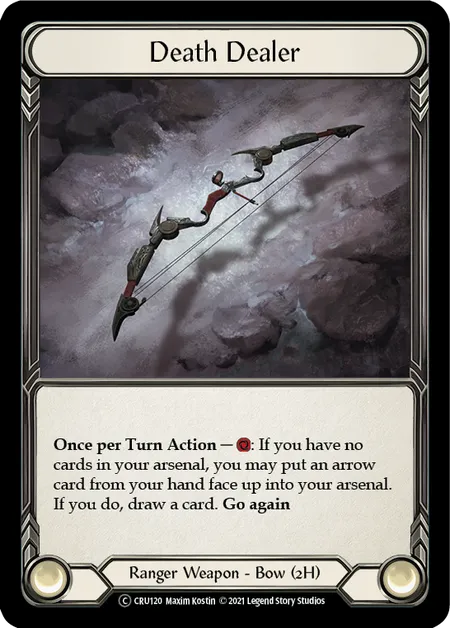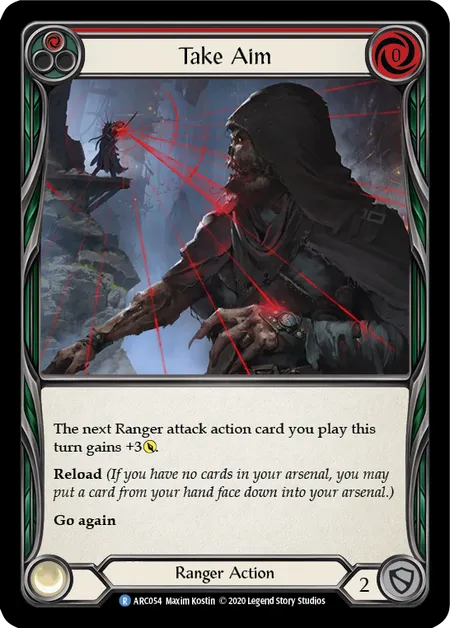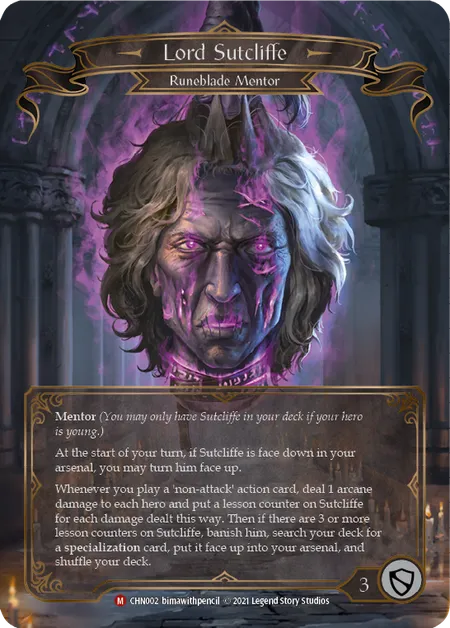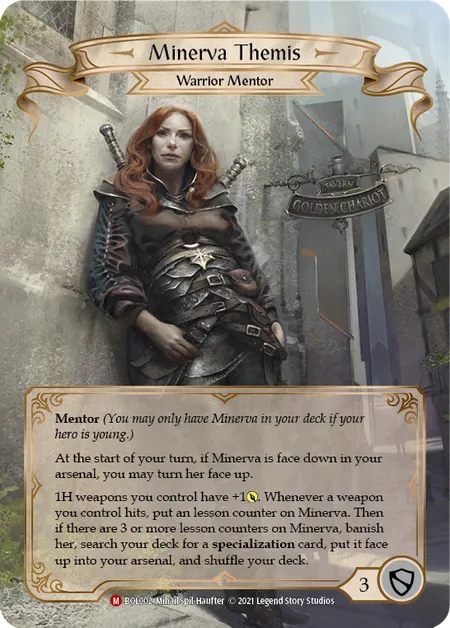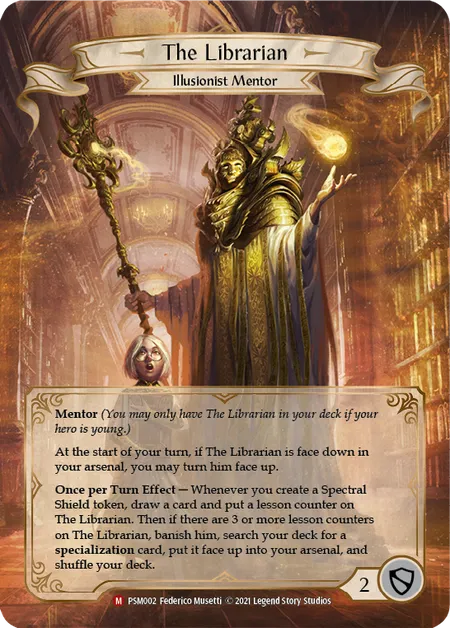Foreword
It’s official! The Comprehensive Rulebook 2.0 is now published and in effect. The changes are just in time for the first Calling event to implement the new rules- The Calling Indianapolis, which goes down this weekend, March 18-20! Please note that with this release there are some minor changes from the preview version that was uploaded 4 weeks ago, but these changes have no effect on any current card interactions.
While the majority of important interaction changes were covered in a previous Back Alley Oracle article, this week we’ll be looking at some minor technical interactions (that have little effect on gameplay) that have been addressed by the CR2.0.
If my Spectral Shield is destroyed after damage is dealt, does the combat chain close?
[CR1.5] Yes. The destruction of weapons during combat is covered by a single general rule:
- 20.1.1 If the attack effect of an activated ability is on the chain link (not a previous chain link), and its source is destroyed, the layer will not resolve and the combat chain will close.
This means if the weapon was destroyed after damage is dealt but before the end of the chain link resolution step, the combat chain would close and the player would not gain the benefit of gaining an action point if the attack had go again.
Nic controls a Merciful Retribution and a Spectral Shield. Tyler controls Iris of Reality attacks Nic with a Spectral Shield. Nic does not defend and their Spectral Shield is destroyed triggering Merciful Retribution. During the resolution step of combat, the triggered-layer for Merciful Retribution is resolved, dealing 1 arcane damage to Tyler, which destroys the attacking Spectral Shield. Because the Spectral Shield is still the current chain link, the combat chain is closed before go again resolves, therefore Tyler does not gain an action point from attacking with their Spectral Shield
[CR2.0] No. Once the attack has dealt damage the resolution step begins and the chain link is considered to have resolved. This means that even if the attack is destroyed or otherwise ceases to exist, the combat chain does not close.
- 7.8.2. If a rule or effect causes the combat chain to close, the current step (if any) ends, and the Close Step immediately begins. The combat chain closes from the following:
- 7.8.2c If the attack of the current chain link ceases to exist before the chain link resolves, at the beginning of the Resolution Step of combat.
As such, in the above example, the combat chain would not close and Tyler would still gain an action point, even though the Spectral Shield was destroyed.
Can I activate Energy Potion after I play it, but before it resolves?
[CR1.5] Yes. As a small oversight in the construction of the 1.5 rules, you could play a card, and activate any instant activated abilities on it before it had resolved. This is due to the following three rules:
- 11.2 “The arena” means [...] chain zones, [...].
- 11.2.2 The words “you control” means cards you own (and have not lost control of), [...] and which are in any zone that makes up the arena [...].
- 15.2 Abilities of cards and tokens can only be activated by the player who controls the card or token, and only while the card or token is face up in the arena.
This originally was only an issue for Energy Potion and Dissipation Shield, as the only playable cards with an instant activated ability. But with the addition of numerous cards from Everfest, this becomes more of a fringe technical issue, especially with the advent of more instant speed play.
Tyler plays Energy Potion (layer 1 on the chain). Before it resolves, Nic plays Zap at instant speed targeting Tyler (layer 2 on the chain). In order to have resources points for Arcane Barrier, Tyler activates the Energy Potion they control on layer 1 of the chain (layer 3 on the chain). The activated layer (layer 3) resolves first, giving Tyler 2 resource points. Zap resolves (layer 2) next, and Tyler uses the 2 resources points they just gained for their Arcane Barrier to prevent Zap’s Damage. Finally, layer 1 tries to resolve, but the Energy Potion is destroyed.
[CR2.0] No. You can no longer activate the abilities of objects on the stack (formally the chain) because it is no longer in the arena. This is covered by the following rules:
- 1.7.5. An ability of an object is functional when its source is public and in the arena; otherwise it is non-functional, [...]
- 3.14.1. The stack zone is a public zone outside the arena. [...]
As such, played cards must resolve and become permanents in the arena before their abilities can be activated - as one would expect.
When does the “When this enters the arena” effect trigger?
[CR1.5] When the card is played (or on entering the arena). Because the chain was in the arena, some cards had an additional side-effect of producing a triggered-layer before the card as a layer resolves on the chain. Specifically “When this enters the arena” triggered effects. While it has little to no effect on typical gameplay, there may be future technical interaction issues that stem from this.
- 11.2 “The arena” means [...] chain zones, [...].
Tyler plays Chains of Eminence (layer 1 on the chain), which triggers and creates a triggered-layer (layer 2 on the chain). Both players pass in succession and layer 2 resolves. Tyler names a card for Chains of Eminence’s triggered effect, but Chains of Eminence itself is still unresolved as layer 1 on the chain.
[CR2.0] When the card resolves (or on entering the arena). As mentioned in the previous section, the stack (formally the chain) has been moved out of the arena, ensuring that the card becomes a permanent in the arena before the triggered effect resolves.
- 3.14.1. The stack zone is a public zone outside the arena. [...]
Does Shiyana copy talent supertypes?
[CR1.5] Yes (kind of). There was no formal distinction between classes and talents when it comes to object supertypes. As such, Shiyana was often ambiguously ruled to have all cards owned by the player gain all supertypes of the targeted hero, including talents (e.g. Light, Shadow, Elemental).
- 6.4.2 Super-type(s) Super-types appear before “Hero” in the card type field. A hero card will typically have a Class and/or Talent super-type that defines which non-generic cards you may include in your deck.
Tyler is playing as Shiyana and Nic is playing as Oldhim. At the beginning of the action phase Shiyana becomes a copy of Oldhim and all the cards Tyler owns gain the supertypes Elemental and Guardian.
[CR2.0] No. Supertypes are now clearly divided into classes and talents, ensuring that there is no ambiguity for effects that specifically reference either classes or talents. Shiyana in particular is affected in a minor way.
- 2.10.6. Supertypes are non-functional keywords, and do not add additional rules to an object. A supertype is either a class or a talent.
- 2.10.6a The class supertype keywords are Brute, Guardian, Illusionist, Mechanologist, Merchant, Ninja, Ranger, Runeblade, Shapeshifter, Warrior, and Wizard.
- 2.10.6b The talent supertype keywords are Earth, Elemental, Ice, Light, Lightning, and Shadow.
Can Azalea stack cards in the same arsenal zone with her ability?
[CR1.5] Yes. An interaction with New Horizons allowed Azalea players to stack more than one card in an arsenal zone. This is primarily due to the wording of the effect on Azalea and the lack of any restrictions on arsenal zones in general.
- 11.1.7 Arsenal
Any card that could start the game in your deck can exist in your arsenal zone. Cards can be played from arsenal. Cards are put into the arsenal face down unless otherwise specified.
Tyler controls New Horizon, and has a card face up in each of their arsenal zones (A1 and A2). Tyler activates and resolves Azalea’s ability and puts the card from A1 to the bottom of their deck. Then the top card is placed into Tyler’s arsenal, but it is not specified which zone it must be placed into, and there is no restriction on the limit of an arsenal zone. Tyler puts the card face up in A2, with the result of there being 0 cards in A1 and 2 cards in A2. Tyler can repeat this process once per turn, as long as there is a card in A1 to use Azalea’s ability.
[CR2.0] No. While Azalea’s ability may receive an errata in the future to bring it inline with other similar effects, the CR2.0 brings in a restriction to limit the cards in an arsenal zone to one. This means that the card Azalea fetches from the top of the deck must be put into the empty arsenal zone, preventing them from stacking.
- 3.2.2. An arsenal zone can only contain up to one card, that started in the owner’s starting deck.
How do Mentors work?
[CR1.5] Intuitively, but not Rules as Written. Mentors produced an interesting challenge to the rules. Each mentor has a triggered effect that triggers during the start phase of a turn, then on resolution checks if the mentor is face down in the arsenal. There are several issues of ambiguity with such cards:
- There are no specific clarifications for when a triggered effect can trigger, especially when the source card is face down in a private zone.
- The card should be face down when the effect triggers, meaning that if the card is not revealed to the opponent, only the owner knows that the triggered-layer is on the chain.
- The resulting effect is optional, meaning that even if the owner reveals the card to prove the effect has triggered, they may not want to turn the card face up, so it simply returns back to being face down in the arsenal.
[CR2.0] Intuitively and Rules as Written. Mentor's primary triggered effect now comes under a new concept called Hidden Triggered Abilities. This allows the triggered effects to function as intended (i.e. when the card is face down outside the arena).
- 5.4.7b A hidden triggered ability is both a while-static ability and triggered-static ability, where the while-condition specifies that the source is private or in a private zone. If the triggered condition is met while the ability is functional and the source is private, the owner may decide to trigger the effect. If they do, the source of the ability becomes public and the triggered effect produces a triggered-layer to be added to the stack. The source remains public until the triggered-layer resolves or otherwise ceases to exist, and then it returns to being private.
What happened to Perry?
[CR1.5] There was no official terminology for a player who is not a turn player, but the term “passive player” was informally adopted, and Perry was brought into the world of FaB. Perry has participated extensively in the community, from Rules Reprise articles, Judge exams, and even occasionally on the judge discord. However, many community members are unfamiliar with the term “Passive player” and as a result fail to see the connection between Perry and their position as player who is not the turn player.
[CR2.0] Perry will be retired from their role in the game of Flesh and Blood. The CR2.0 has been revised upon release and presents the new term “Non-turn player” in an effort to make the terminology more accessible to the community. As a result, Perry’s official position will be filled by the newcomer, Nic. We hope that in the coming months Nic will serve as a pillar of the community, in a critical position that helps provide clear communication in the rules of FaB. Let’s all give a big warm welcome to our new example player Nic!
